Jumping spiders
Tiny, cute and famous
Jumping Spiders are very appealing creatures, if you are prepared to look closely!
This group of pint-sized spiders are little bundles of cocky cuteness that will gaze up at you with large expressive eyes. Not dangerous to humans, jumping spiders are widespread, found in most habitats and it is easy to observe them leaping around Sydney Olympic Park or your garden.
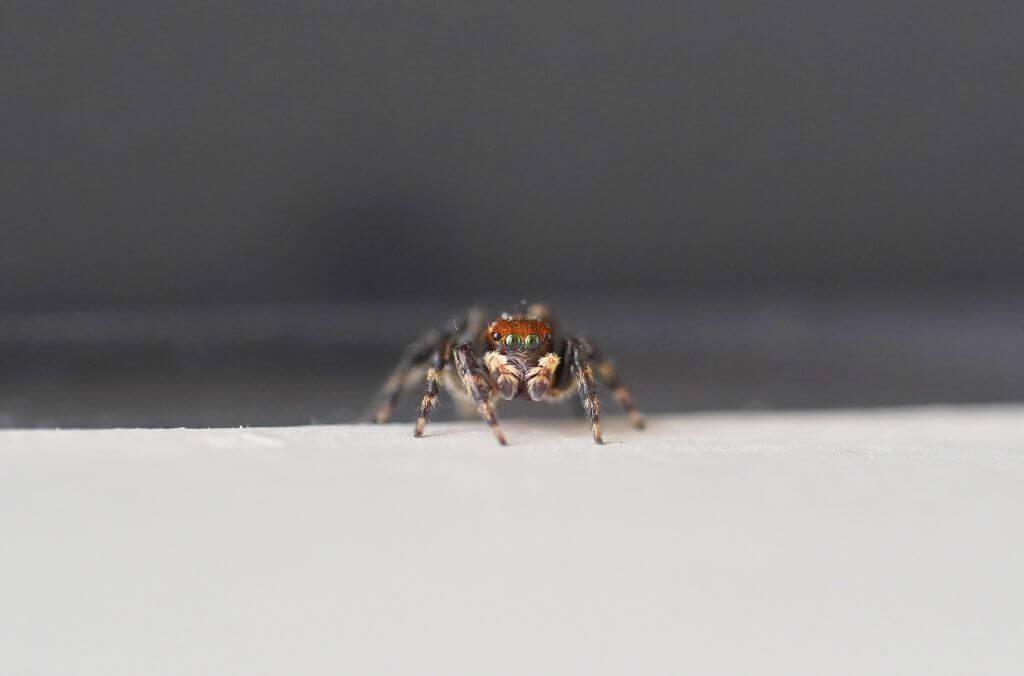
The forward-facing eyes of jumping spiders allows for excellent depth perception 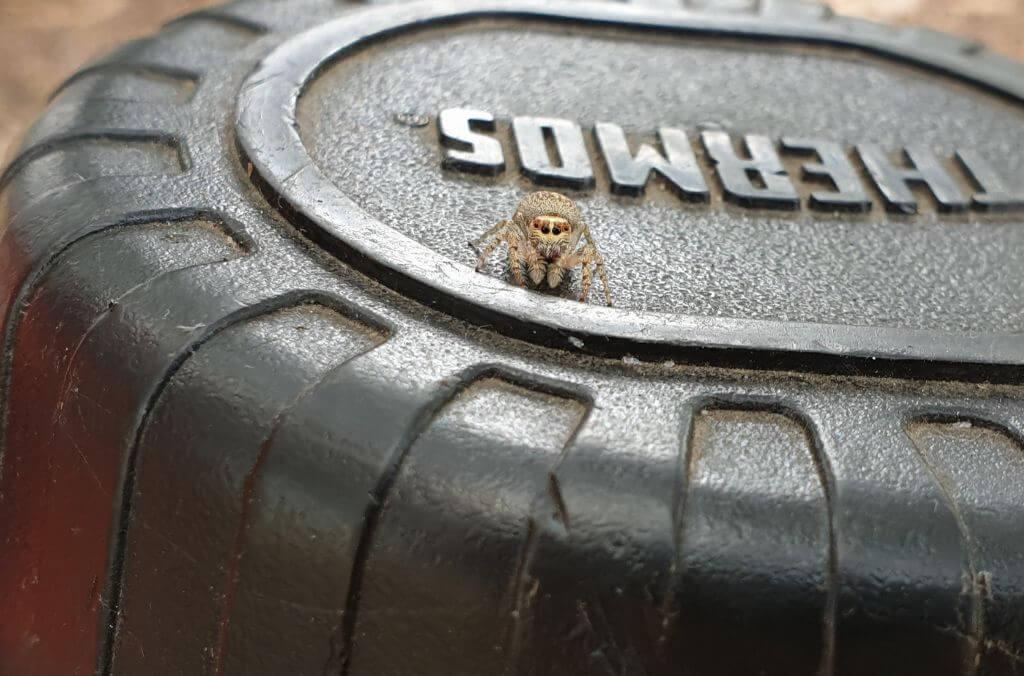
Most jumping spiders are tiny – this spider is only 3mm
What big eyes you have
One of the best ways to confirm that you are looking at a jumping spider is if it turns to look right at you. When it is focusing those big blinkers on you it is making sure you are not a threat. Jumping spiders have four pairs of eyes with one large pair facing directly forward. These primary eyes are part of their appeal and provide high resolution images, seeing in both colour and ultraviolet. All 8 eyes together provide the spider with a near 360-degree view of its world.
An active hunter
Jumping spiders have been around to catch and eat insects for millions of years, and they are a wonderful ally in pest control. They do not build webs but free roam, finding and stalking prey under leaf litter, up trunks, and everything in between. As their name implies, they are prodigious jumpers. Thanks to powerful legs, these spiders can leap on their prey, jumping up to 40 times their body length. They do produce silk, but use it as a safety rope, frequently anchoring themselves to surfaces like a rock climber in case they fall.
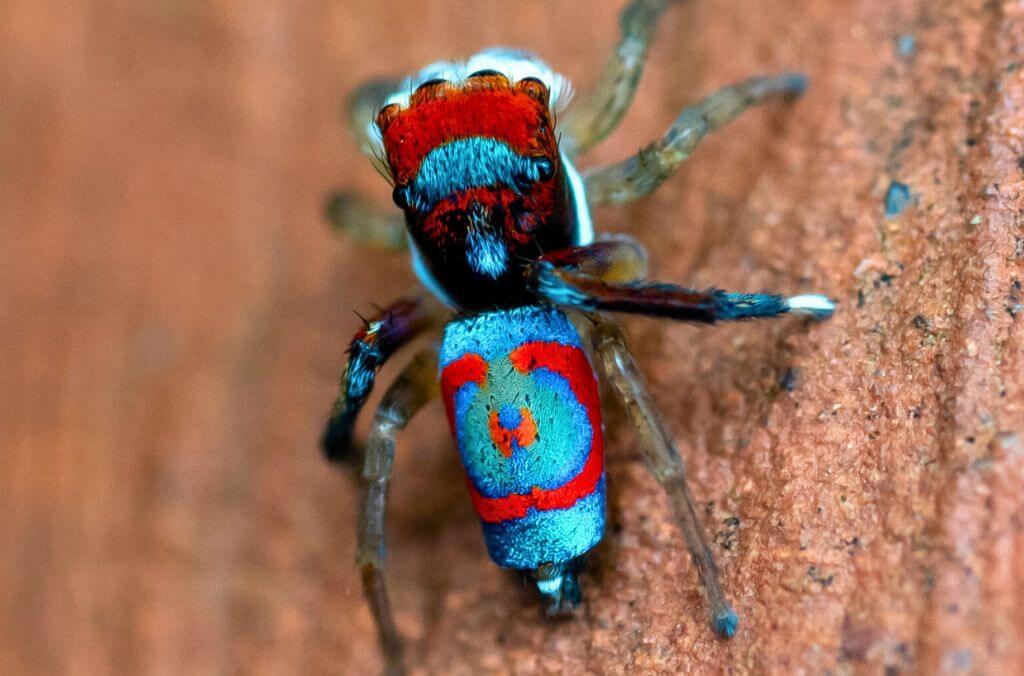
The Splendid Peacock Spider was recently spotted by Leo Skowronek (Fresh Landscapes) at Blaxland Riverside Park 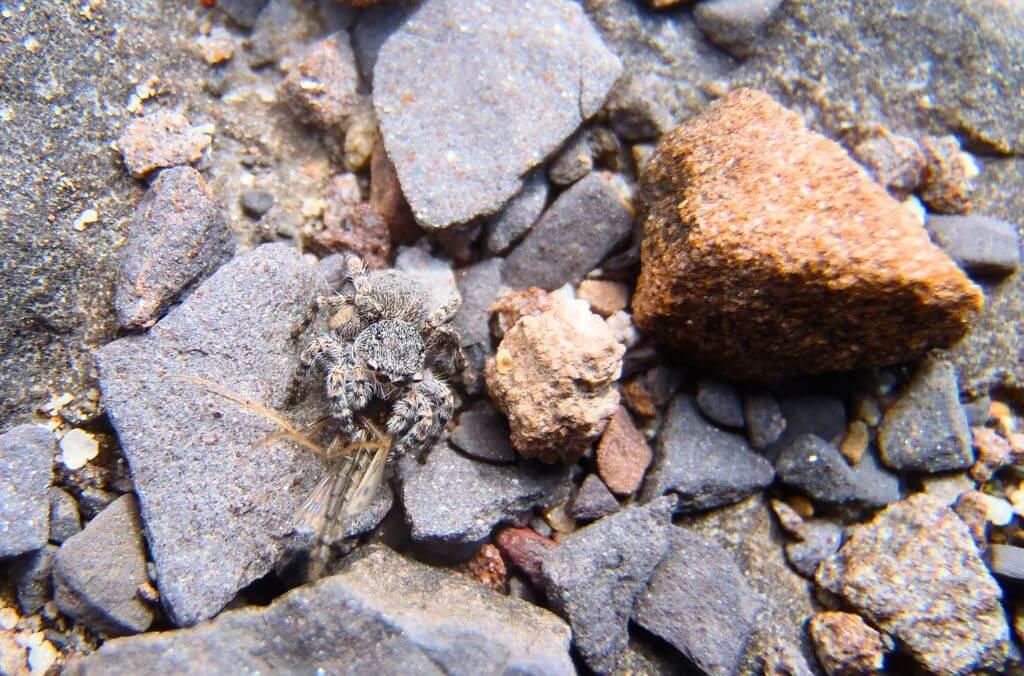
Spiders are excellent terrestrial insect predators. This little jumping spider is helping to control mosquitos
Spider influencers
Jumping spiders are now one of the world’s most popular spider groups, featuring in documentaries, YouTube hits, newspaper stories, and countless macro photographs. The most famous jumping spider group of all is the Maratus or peacock spiders due to their amazing behaviours and beautiful colouring.
Looking more like a fuzzy Muppet than a traditional spider, jumping spiders have won many hearts with their endearing and intelligent behaviours. Next time you see a tiny spider spinning in place, trying to check you out, drop down to their eye level and say hello.
Related articles


This week is Parks Week - a time of celebrating the incredible role parks and open space.
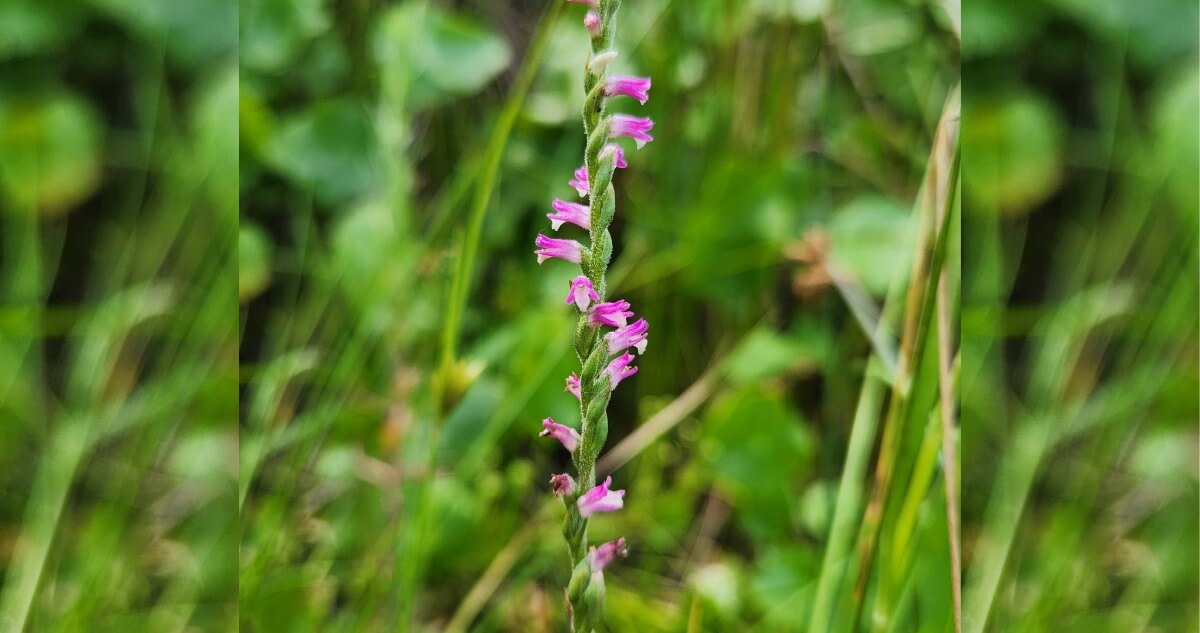

If you look closely, you may spot beautiful terrestrial orchids flowering at Sydney Olympic Park.
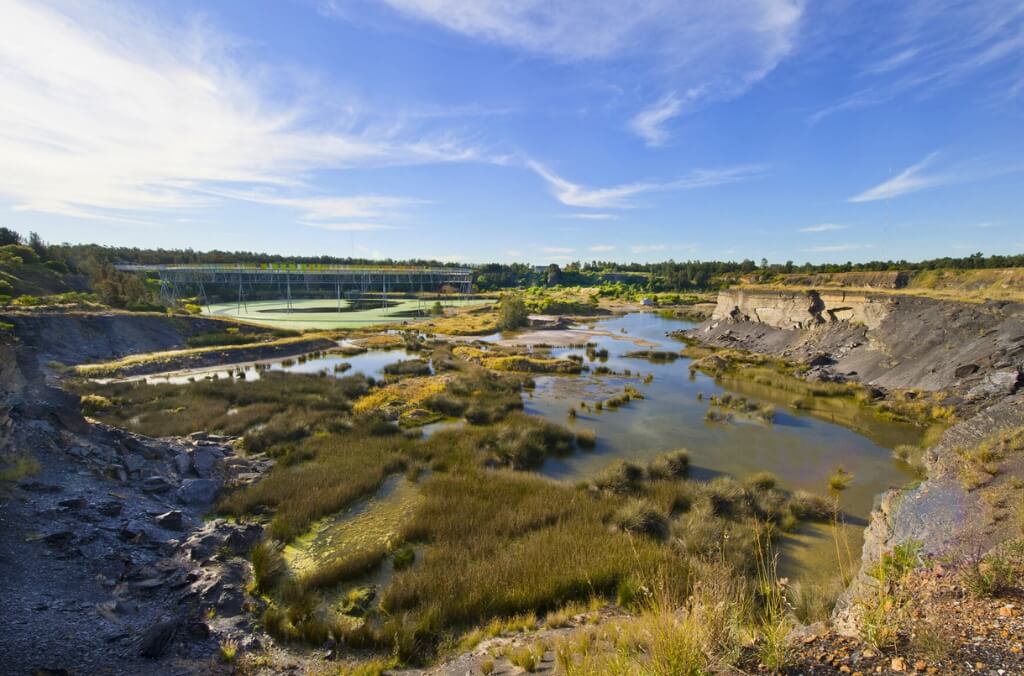

5 management actions carried out across the wetlands in the Park.